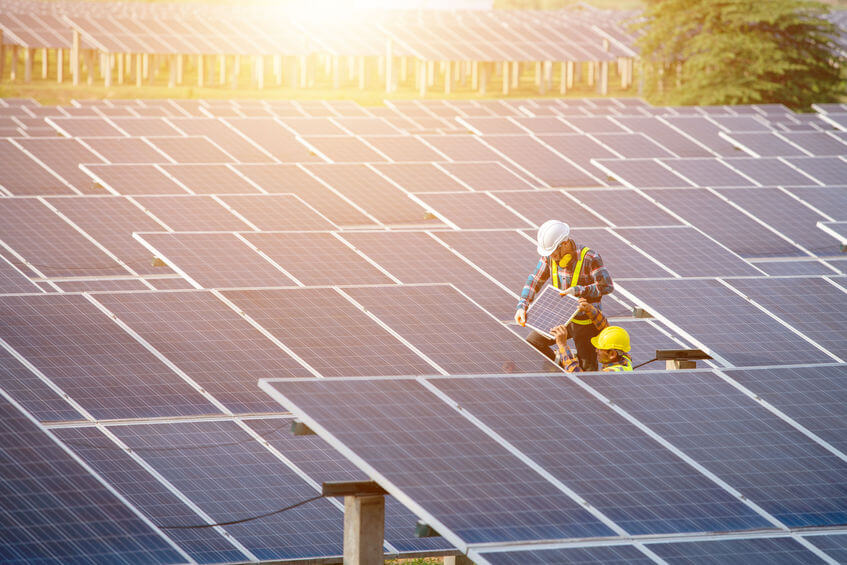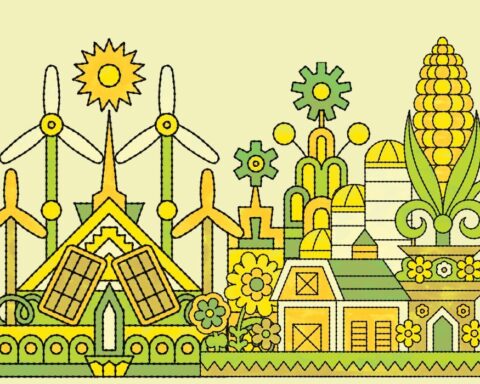The COVID-19 pandemic represents an opportunity to “reposition” the Canadian economy to take full advantage of the low-carbon transition, the new chair of the Canada Infrastructure Bank said June 3.
The economic crisis resulting from the pandemic has forced corporations and governments to deviate from their standard operating procedures, opening up an opportunity for innovation and creativity, said Michael Sabia, who was recently appointed by the federal government to head up the infrastructure bank.
“We need to seize this moment to be creative about how we reposition the national economy for a world that is going to be different, and a very important part of that [effort] is repositioning our economy to be a significantly lower carbon economy,” Sabia told a virtual roundtable hosted by Corporate Knights.
Sabia said that there is plenty of potential for the Canada Infrastructure Bank (CIB) to participate in clean energy projects but that the federal Crown corporation has underperformed to date.
The CIB has a mandate to invest $35 billion in federal funding by 2027/28 but has been criticized for its slow start.
Sabia said the bank should focus less on traditional infrastructure like roads and ports and more on stimulus projects that accelerate the energy transition, including renewable power, interprovincial transmission, low-carbon transportation and digitalization efforts to ensure all Canadians have access to high-speed internet.
The Corporate Knights roundtable was part of its seven-part Building Back Better project that urged the Liberal government to ensure that any economic recovery plan have a climate-change focus.
Addressing the roundtable, Industry Minister Navdeep Bains said Canada will have to be innovative in responding to the COVID-19 pandemic and the climate crisis.
He said hundreds of Canadian businesses have responded to the need for medical equipment by changing their operations to produce new products. “That’s the same mindset we have to have when it comes to confronting the climate crisis.”
In a white paper released Wednesday, authors Ralph Torrie, Céline Bak and Toby Heaps said the federal government should allocate $106 billion over the next 10 years for a host of clean energy projects that would create the equivalent of 670,000 full-time jobs per year. More than a third of the federal government investment, $40 billion, would be frontloaded in the first two years (with half dedicated to grants to finance a green renovation wave). Over 10 years, the white paper estimates, the federal investment and complementary policies would crowd in a further $730 billion in mostly private sector investment.
All told, the investments would reduce greenhouse (GHG) emissions by 236 megatonnes annually by 2030, from 2018 levels of 729 megatonnes. That scale of GHG reductions would put the country on track to meet the Liberal government’s target of net-zero emissions by 2050, Bak told the roundtable.
Proposals have included support for a major retrofit program to improve energy efficiency in buildings, planting an additional 800 million trees a year for 10 years, and investments in coast-to-coast electric-vehicle (EV) infrastructure, as well as interprovincial transmission lines to deliver low-carbon electricity and a $40 billion Energy and EV Innovation Fund to help create Canadian champions in fast-growing low-carbon markets where Canada has strong assets, including bitumen-derived carbon fibres, green hydrogen, renewable jet fuels, batteries and EVs.
Other speakers suggested that a green stimulus plan should have goals beyond job creation and emission reductions.
Canadians are now confronting a triple whammy of the COVID-19 pandemic, the climate crisis and the vivid reminder of the systemic racism embedded in the country’s attitudes and institutions, said Catherine Abreu, executive director of Climate Action Network Canada.
Any green stimulus programs must be based on a “just recovery” Abreu said. Her group was one of 150 civil society organizations that released a document this week proposing “Six Principles for a Just Recovery” for a more equitable and sustainable future.
“This moment is forcing us into confrontation with the vulnerabilities that are built into our economic and social systems,” she said. “There are ongoing crises that lurk behind the current health and economic emergencies . . . So if we are going to tackle issues like climate change, we have to come at them fundamentally as a fight for justice.”
The federal government can pursue reconciliation with Indigenous communities by partnering with them on clean energy projects that deliver health, economic and social benefits to the people, said Terri Lynn Morrison of the Indigenous Clean Energy network.
Morrison said Indigenous people are already major developers and partners in clean energy projects across the country. “They’re ready to seize the opportunity,” she added.
Some economists have questioned whether stimulus spending on clean energy infrastructure is the optimal way to respond to an economic slump precipitated by a health crisis that has forced Canadians into social isolation. Sectors like retail, restaurants and tourism have been hit hardest with job losses, and it’s not clear they would benefit from traditional – or even non-traditional – stimulus spending.
In a blog post last month, economists Dale Beugin and Mike Moffatt argued that green stimulus spending should target areas such as infrastructure, while government should continue to rely on regulation and carbon price to drive climate policy.
Trying to meet the requirements of both recovery and emissions reductions would result in an approach that fails to do either efficiently, they argued.
“Climate considerations should be less constraint and more a radar to help identify non-traditional but job-rich investment opportunities, such as deep retrofits and flood protection for homes and workplaces,” Heaps said via email. “Climate can also be a tiebreaker where two recovery options offer similar economic benefits.”
“In addition to the large investments in green infrastructure, the ‘shecovery’ will likely require significant investments in eldercare and childcare,” he added.
During the roundtable, Ivey Foundation president Bruce Lourie noted that countries like Germany and South Korea have succeeded in providing support for key clean energy sectors. The refrain that “governments shouldn’t pick winners” is a “tired and misguided refrain for us to be using,” he said.
As an example, he cited the promising opportunities for Canada to be a global leader in the emerging market for hydrogen-powered buses and trucks.
Environmental economist David Sawyer said proponents of green stimulus plans should emphasize “co-benefits” that come with investment in emission-reduction projects. They can include not only more jobs but also health benefits from reduced fossil-fuel pollution and greater resiliency to withstand the severe weather impacts of the climate crisis.
Dianne Saxe, Ontario’s former environment commissioner, said Canada needs to find a way to maintain long-term climate-change policies so businesses and consumers have confidence that investments made today are not undermined tomorrow.
“The biggest challenge is how to have stable policies that survive government changes,” she told the roundtable. Canadians need to be active, she said. “Fundamentally, to get durable public policy, we need strong, loud public demand for it.”







